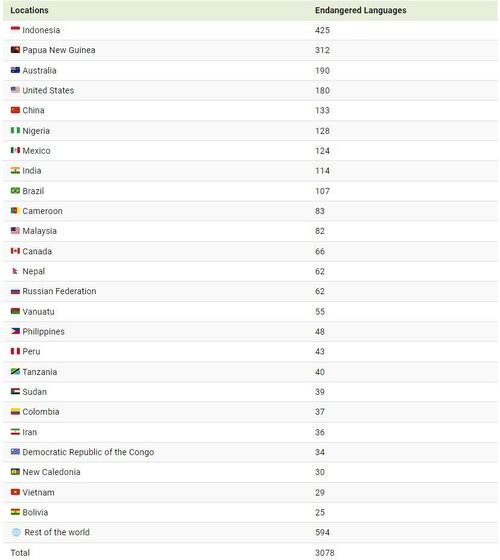
Almost half of the world’s approximately 7,000 signed and spoken languages are currently endangered.
Visual Capitalist's Bruno Venditti introduces this graphic, from Stephen Jones, CEO of Derivation.co, examines the current global landscape of languages that could become extinct.
Almost 90 million Speak Languages at Risk of Extinction
An extinct language is one that no longer has any first-language or second-language speakers.
In modern times, languages have usually become extinct due to cultural assimilation, leading to language shift, and the gradual abandonment of a native language in favor of a foreign language, primarily those of European countries.
For instance, numerous Native American languages were supplanted by English, French, Portuguese, Spanish, or Dutch due to European colonization of the Americas.
Currently, out of the world’s 7,168 living languages, 3,078 (43%) are classified as Endangered. Over 88 million people speak languages at risk of extinction.
Additionally, 100 of them face the genuine threat of extinction within a few decades if no action is taken.
While every language matters to the individuals speaking, writing, and signing them across the planet, 80% of endangered languages (2,484) exist within just 25 countries.
Of those, the top four countries alone – Indonesia (425), Papua New Guinea (312), Australia (190), and the U.S. (180) – account for well over a thousand endangered languages.
Just as during the colonization period, the majority of endangered languages are spoken in Indigenous communities, putting their inherent culture and knowledge at risk of loss.
Languages, however, can be revitalized.
Over the last 50 years, for example, government support to teach native languages in schools has helped increase the number of speakers of the Māori language in New Zealand, and Hawaiian in the American state.
Advancements in AI are also providing tools to preserve languages.
Almost half of the world’s approximately 7,000 signed and spoken languages are currently endangered.
Visual Capitalist’s Bruno Venditti introduces this graphic, from Stephen Jones, CEO of Derivation.co, examines the current global landscape of languages that could become extinct.
Almost 90 million Speak Languages at Risk of Extinction
An extinct language is one that no longer has any first-language or second-language speakers.
In modern times, languages have usually become extinct due to cultural assimilation, leading to language shift, and the gradual abandonment of a native language in favor of a foreign language, primarily those of European countries.
For instance, numerous Native American languages were supplanted by English, French, Portuguese, Spanish, or Dutch due to European colonization of the Americas.
Currently, out of the world’s 7,168 living languages, 3,078 (43%) are classified as Endangered. Over 88 million people speak languages at risk of extinction.
Additionally, 100 of them face the genuine threat of extinction within a few decades if no action is taken.
While every language matters to the individuals speaking, writing, and signing them across the planet, 80% of endangered languages (2,484) exist within just 25 countries.
Of those, the top four countries alone – Indonesia (425), Papua New Guinea (312), Australia (190), and the U.S. (180) – account for well over a thousand endangered languages.
Just as during the colonization period, the majority of endangered languages are spoken in Indigenous communities, putting their inherent culture and knowledge at risk of loss.
Languages, however, can be revitalized.
Over the last 50 years, for example, government support to teach native languages in schools has helped increase the number of speakers of the Māori language in New Zealand, and Hawaiian in the American state.
Advancements in AI are also providing tools to preserve languages.
Loading…






